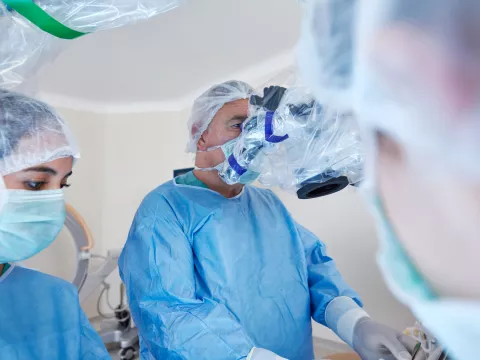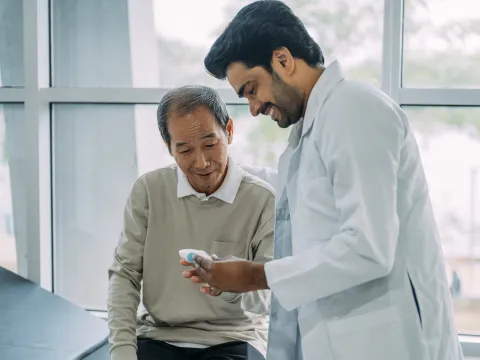- AdventHealth

Choose the health content that’s right for you, and get it delivered right in your inbox.
While a hernia is a very common health issue, no matter how mild or severe, hernia symptoms should never be ignored. While some can be managed with lifestyle changes, others can become life-threatening if left untreated. Thankfully, hernia surgeries have come a long way, and now procedures can be done with very small incisions, having patients healing and feeling better sooner.
What’s a Hernia?
A hernia occurs when an area of weakened muscle tears, usually in the abdomen. This allows part of an internal organ or tissue to bulge through. Depending on the hernia’s location and size, it may be possible to see the bulge.
Most people with hernias get them as their muscles weaken with age. But others may develop hernias because they were born with weak abdominal muscles, are overweight, use tobacco or have poor nutrition — all of which increase your hernia risk.
If you lift heavy objects (especially without using proper lifting techniques) or strain your muscles while coughing, sneezing or having a bowel movement, you can eventually develop a hernia or make an existing one worse.
Symptoms of a Hernia
Symptoms of a hernia can vary depending on the type and location, but generally include:
- Cough, heartburn or difficulty swallowing
- Pressure in the area of the hernia
- Visible bulging or a lump you can feel
Treatment with Robotic Surgery
Robotic surgery has been an option for surgeons for many years, but now the technology is more sophisticated than ever. As one of the most advanced robots in use, the da Vinci® system is now a viable alternative to open surgery and laparoscopic procedures, in many cases.
While using the robotic system to repair a hernia, surgeons have a greater degree of precision and range of motion in small spaces made with tiny incisions. The robotic instruments function like an extension of your surgeon’s hands — an operating room partner who:
- Gives surgeons unprecedented control in a minimally invasive environment
- Gives surgeons a better physical position to operate in
- Has 3D visualization capabilities, in addition to a monitor
- Has adjustable tips on the ends of its arms
- Has mechanical wrists with a 270-degree range of motion
- Minimizes surgeon fatigue
A Faster Road to Recovery
The da Vinci system may be a marvel for surgeons to use, but it’s patients who benefit most from robotic-assisted surgery. It translates to less time spent in the hospital for hernia treatment and decreased post-operative pain for most patients.
In addition to these two major benefits, minimally invasive surgery with the da Vinci can also mean:
- A faster recovery
- Less trauma to the body
- Minimal scarring, compared to open surgery
- Same-day discharge, in some cases
- Small incision sites
We’re Ready to Care for You
Our team is here to keep you safe and get you back to the life you love. We’ve implemented more safety protocols for your peace of mind and the safety of your caregivers, including:
- New visitor policies
- Temperature checks for all patients, visitors and staff
- Social distancing in all spaces
- Required face masks




